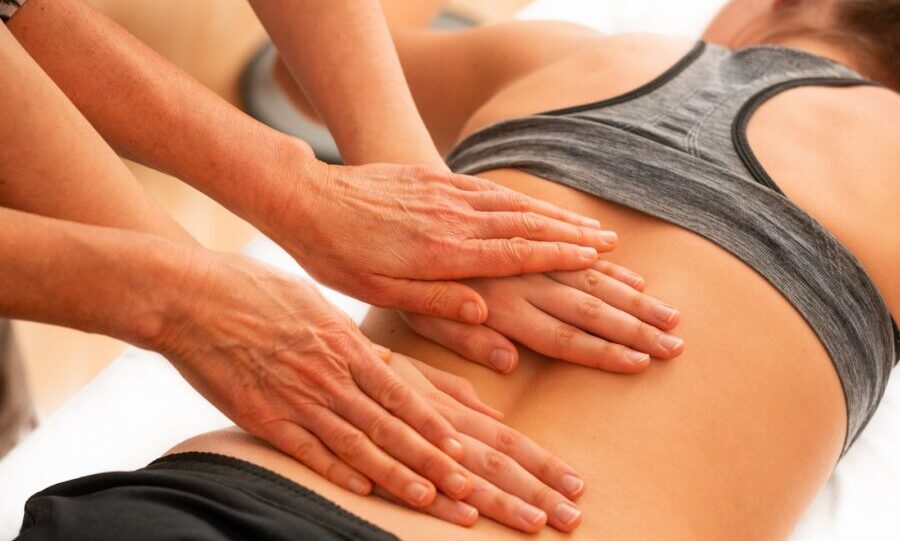Pain can be classified as anything from a dull ache to a sharp stab. It can range from mild to extreme. You may feel pain in only one part of your body or it may be widespread. While acute pain is a normal response to an injury or medical condition, it is usually short-lived. Chronic pain, however, continues beyond the time expected for healing and generally lasts longer than three months, whether constantly or intermittently.
Here, transformative wellness destination Chiva-Som, discusses the impact of chronic pain on everyday life and provides quality advice and remedies to help overcome it.
WHAT CAUSES CHRONIC PAIN?
Chronic pain can be the result of normal ageing, the wear and tear of bones and joints such as with osteoarthritis. Various diseases such as fibromyalgia, rheumatoid arthritis, and cancer can also cause debilitating pain. In many cases, however, diagnosis is complicated and no one cause can be pinpointed.
HOW PAIN AFFECTS DAILY LIFE
Chronic pain can interfere with everyday activities such as self-care and movement. It can restrict a person’s ability to function normally and socialise. Pain can also both affect and be affected by a person’s state of mind. The nature of chronic pain – the fact that it is ongoing and in some cases seems almost constant – can make a person more susceptible to depression and anxiety. At the same time, psychological distress can amplify pain.
Chronic pain can have a large impact on work and employment. Many individuals find it challenging to maintain a consistent work schedule and productivity due to the constant discomfort and limitations imposed by chronic pain. The unpredictability of pain flare-ups can lead to missed workdays and reduced job performance, often resulting in financial strain and job insecurity.
Standard medical interventions include medication, nerve blocks, and in some cases surgery. There are, however, several alternative therapies available, and what works best for each person will vary depending on their type and level of pain.
ALTERNATIVE THERAPIES FOR PAIN MANAGEMENT
Physical therapy can help alleviate pain caused by injuries or chronic conditions. Physical therapists use various exercises and other techniques to improve strength, flexibility, and mobility.
For example, massage therapy can help reduce muscle tension and pain, increase circulation, and promote relaxation. Meanwhile, acupuncture is a traditional Chinese medicine technique that involves the insertion of thin needles into specific points on the body. This technique is thought to stimulate the body’s natural pain relief mechanisms and improve overall wellbeing.
MIND-BODY THERAPIES TO PRACTICE AT HOME
Mind-body therapies can reduce tension and stress, which may in turn reduce pain levels. There are a variety of techniques to choose from, including the below:
Deep breathing: find a quiet, comfortable place to sit or lie down. Take a slow, deep breath in through your nose, hold for a few seconds, then slowly exhale through your mouth. Repeat several times.
Meditation: close your eyes and focus on your breath, inhaling and exhaling slowly and deeply. If your mind starts to wander, gently bring your attention back to your breath.
Guided imagery: close your eyes and imagine a peaceful scene, such as a beach or a forest. Use all of your senses to imagine the scene in as much detail as possible.
Progressive muscle relaxation: start by tensing the muscles in your feet for a few seconds, and then relax them. Move onto your calves, thighs, abdomen, chest, arms, and so on, tensing and then relaxing each muscle group.
Yoga: yoga combines physical postures with breathing and meditation. Some yoga poses, such as downward dog and child’s pose, can relieve tension and reduce pain in the back and neck.
Other home practices: exercise has a host of health benefits and one of these is the release of endorphins, which are the body’s natural painkillers. Hot and cold therapy can be as simple as taking a warm bath or shower to relax sore muscles, while an ice pack can reduce swelling and numb pain.
BUT MOST IMPORTANTLY…
Pain management strategies will vary depending on the type and severity of the pain, as well as an individual’s overall health and medical history. A healthcare professional should always be consulted before beginning any pain management regimen.
Joanne is the editor for Workplace Wellbeing Professional and has a keen interest in promoting the safety and wellbeing of the global workforce. After earning a bachelor's degree in English literature and media studies, she taught English in China and Vietnam for two years. Before joining Work Well Pro, Joanne worked as a marketing coordinator for luxury property, where her responsibilities included blog writing, photography, and video creation.



